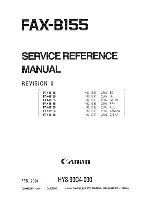
7 – 1 Overedging (Overcasting)
When making a garment with 5/8” pressed open
seams, you will find the most efficient method for
finishing seam allowance is to serge all cut edges of
each pattern piece prior to construction. Since
notches will be cut away during serging, use a water
soluble pen/pencil to mark location of any matching
points. Then, sew seams on your conventional
machine, and press open as usual.
1. Place fabric in front of the presser foot, aligned
with right edge of the needle plate.
2.
Begin stitching, continuing to guide the fabric
along the right edge of the needle plate.
If you have left the upper knife in cutting position, the edge of the fabric should be “shaved” clean, but not cut.
7 – 2 Turning an inside corner
1. If a seam allowance is to be trimmed away, clip
along each cut line for 1 – 2”, as shown.
(Otherwise, pre – trim the edge with scissors).
2. Sew along one edge until you reach the corner.
Make one stitch off the edge of the fabric.
3. Clear the stitch fingers, and rotate the fabric to
reposition the needle just below the previous row
of stitching. Gently pull up on all threads to
remove slack and resume stitching.
Note: If you find a loose thread loop at the corner it is due to too much slack in the needle thread when cleaning
stitch fingers. Try again… turning corners takes a little practice.
7 – 3 Turning an inside corner
1. Mark the cutting line to within 1” of the corner, both directions. (Reinforce loosely woven fabric with stay
stitching on conventional machine).
2. Clip to corner.
3. Align fabric for required seam allowance, and stitch until the knife reaches the corner (don’t cut into corner).
4. Raise the presser foot and straighten out the fabric, forming a pleat.
5. Continue stitching the straightened edge. When done correctly, the pleat will disappear after stitching.
17
















































